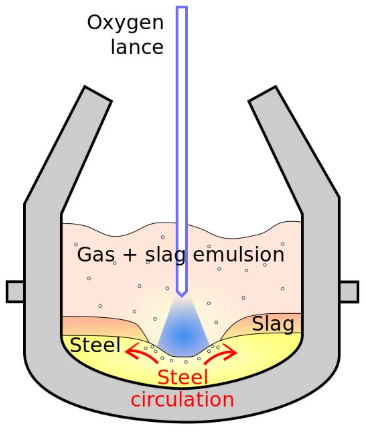
Metals are a group of elements known for their distinctive metallurgical characteristics. These properties include high conductivity, malleability, and ductility. Metals are typically solid at room temperature, with exceptions such as mercury. They have a lustrous appearance and are able to reflect light due to their metallic bonding. This bonding occurs when the outermost electrons of metal atoms are delocalized and form a “sea” of electrons that move freely throughout the metal’s structure. This unique electron arrangement allows metals to conduct heat and electricity efficiently. Additionally, metals are capable of being shaped and deformed without breaking, thanks to their malleability and ductility. These properties make metals essential in various applications, ranging from construction materials to electrical wiring.
Metal is a material that possesses several unique properties. One of its most notable characteristics is its high conductivity, making it an excellent choice for electrical wiring and transmission. Additionally, metals have high tensile strength, allowing them to withstand heavy loads without breaking. They are also malleable, meaning they can be easily shaped or molded into different forms, making them versatile for various applications. Another important property of metal is its durability and resistance to corrosion, which ensures its longevity and reliability in different environments. Moreover, metals have a lustrous appearance, giving them an aesthetic appeal. These properties collectively make metals an essential component in various industries, including construction, automotive, and manufacturing.
Metals are essential elements with various compositions that play a significant role in our daily lives. These materials possess unique properties, such as high thermal and electrical conductivity, malleability, and durability, making them indispensable in numerous industries. For instance, Iron, an abundant metal, is widely utilized in construction, manufacturing of vehicles, and machinery due to its strength and resilience. Aluminum, another commonly used metal, is known for its lightweight nature and corrosion resistance, making it a preferred choice in the aerospace and packaging industries. Additionally, Copper finds its applications in electrical wiring and plumbing systems due to its excellent electrical conductivity and antimicrobial properties. Understanding the compositions and characteristics of metals not only enables us to harness their advantages but also aids in developing innovative technologies and materials for a more sustainable future.
Copper is a versatile metal with various properties that make it highly valuable in numerous applications. It is known for its excellent thermal and electrical conductivity, which makes it ideal for use in electrical wiring and components. Additionally, copper is highly malleable and ductile, allowing it to be easily shaped and formed into desired objects. This property also enables it to be used in the production of pipes, tubing, and other plumbing materials. Copper is also corrosion-resistant, making it suitable for outdoor applications and in environments with high moisture content. Furthermore, its attractive reddish-brown color and ability to develop a natural patina over time make it a popular choice for decorative purposes. Overall, the unique combination of properties exhibited by copper makes it a widely-used and highly desirable metal in various industries.
Steel is a versatile and widely used material due to its exceptional properties. It is an alloy of Iron and Carbon, with other elements sometimes added to enhance specific characteristics. One of the key advantages of steel is its strength and durability, making it suitable for a wide range of applications, from construction to manufacturing. It also has excellent resistance to corrosion, which ensures longevity and reduces maintenance costs. Moreover, steel can be easily molded and shaped into different forms and sizes, allowing for flexibility in design and construction. Its high conductivity of heat and electricity makes it an ideal choice for various industries. Overall, steel’s combination of strength, durability, versatility, and cost-effectiveness makes it a fundamental material in modern society.
Steel is a versatile and widely used alloy composed primarily of iron and carbon. It is renowned for its strength, durability, and resistance to corrosion. In addition to iron and carbon, steel often contains small amounts of other elements like manganese, silicon, and chromium, which further enhance its properties. This alloy is produced through a process called smelting, where iron ore is heated and mixed with carbon to remove impurities and create a homogenous mixture. The resulting material is then shaped into various forms, such as sheets, bars, or beams, to meet different needs in construction, manufacturing, and transportation industries. Steel’s remarkable properties make it indispensable in modern society, where it is used in the construction of buildings, bridges, and vehicles, as well as in the production of appliances and machinery.
Ferrous and Non-Ferrous metals
Ferrous and non-ferrous metals are two distinct types of metals. Ferrous metals, such as iron and steel, contain iron as their main component. These metals are known for their strength and magnetic properties. They are widely used in construction, automotive, and manufacturing industries due to their durability and resistance to corrosion. On the other hand, non-ferrous metals do not contain iron as their primary element. Examples of non-ferrous metals include aluminum, copper, and brass. These metals are lightweight, have a high conductivity, and are highly resistant to corrosion. They are commonly used in electrical wiring, plumbing, and various industrial applications. Understanding the difference between ferrous and non-ferrous metals is crucial when selecting the right material for a specific project or application.


